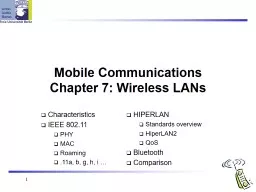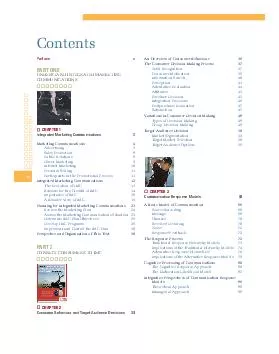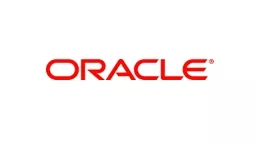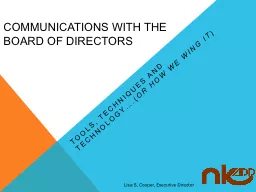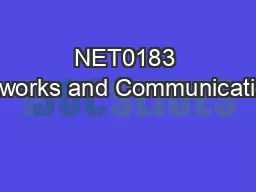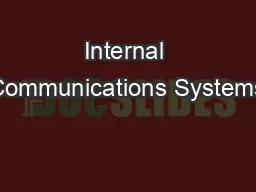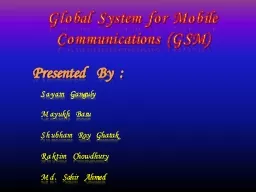PPT-1 Mobile Communications
Author : crunchingsubway | Published Date : 2020-07-02
Chapter 7 Wireless LANs Characteristics IEEE 80211 PHY MAC Roaming 11a b g h i HIPERLAN Standards overview HiperLAN2 QoS Bluetooth Comparison 2 Characteristics
Presentation Embed Code
Download Presentation
Download Presentation The PPT/PDF document "1 Mobile Communications" is the property of its rightful owner. Permission is granted to download and print the materials on this website for personal, non-commercial use only, and to display it on your personal computer provided you do not modify the materials and that you retain all copyright notices contained in the materials. By downloading content from our website, you accept the terms of this agreement.
1 Mobile Communications: Transcript
Download Rules Of Document
"1 Mobile Communications"The content belongs to its owner. You may download and print it for personal use, without modification, and keep all copyright notices. By downloading, you agree to these terms.
Related Documents

